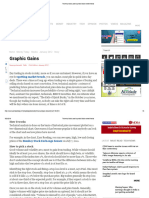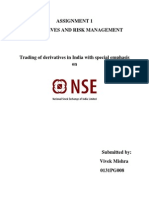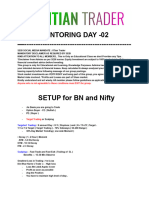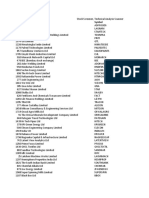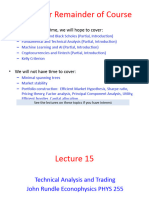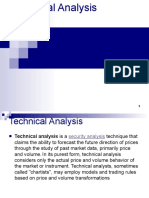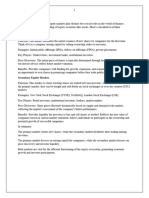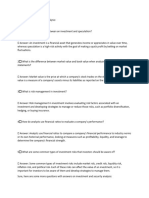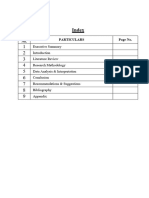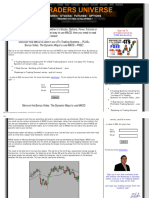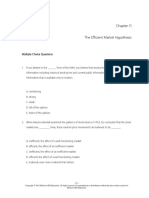0% found this document useful (0 votes)
426 views4 pagesTechnical Analysis Program
The document outlines a technical analysis program that teaches students how to analyze financial markets using technical indicators and charting. It covers the basics of technical analysis including different chart types, trends, support and resistance levels, oscillators, moving averages, and specialized technical tools. Students will learn how to construct charts, identify patterns, use indicators, and apply technical theories. They will also learn software like MetaStock and Spider-Iris and how to prepare daily research reports and forecasts. The goal is for students to understand technical analysis and be prepared for certifications in technical analysis and derivatives trading.
Uploaded by
Keshav KumarCopyright
© Attribution Non-Commercial (BY-NC)
We take content rights seriously. If you suspect this is your content, claim it here.
Available Formats
Download as PDF, TXT or read online on Scribd
0% found this document useful (0 votes)
426 views4 pagesTechnical Analysis Program
The document outlines a technical analysis program that teaches students how to analyze financial markets using technical indicators and charting. It covers the basics of technical analysis including different chart types, trends, support and resistance levels, oscillators, moving averages, and specialized technical tools. Students will learn how to construct charts, identify patterns, use indicators, and apply technical theories. They will also learn software like MetaStock and Spider-Iris and how to prepare daily research reports and forecasts. The goal is for students to understand technical analysis and be prepared for certifications in technical analysis and derivatives trading.
Uploaded by
Keshav KumarCopyright
© Attribution Non-Commercial (BY-NC)
We take content rights seriously. If you suspect this is your content, claim it here.
Available Formats
Download as PDF, TXT or read online on Scribd
/ 4














